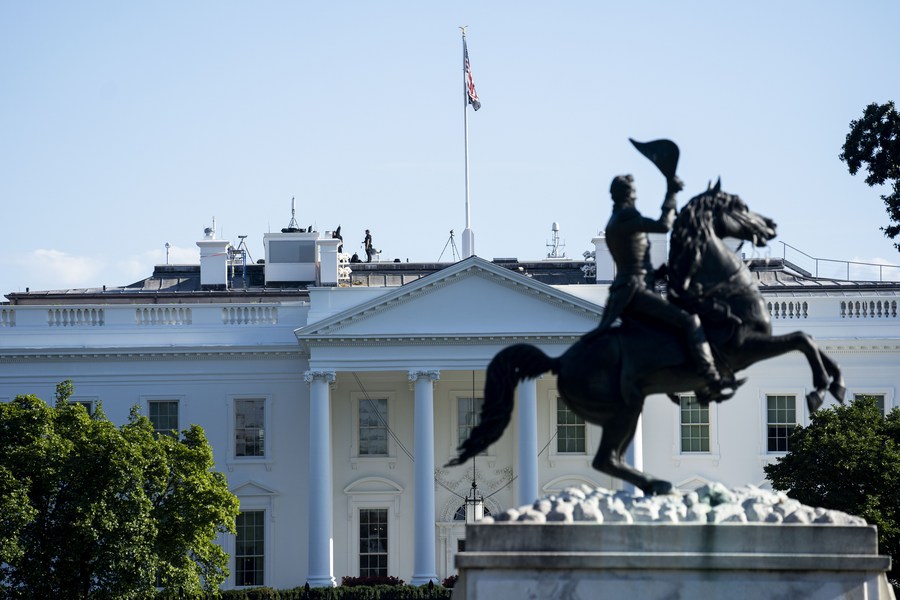Washington should halt conflict-provoking moves
By Mark Pinkstone | China Daily Global | Updated: 2023-08-17 08:56

US Defense Secretary Lloyd J.Austin III burst into the Australia-US ministerial meeting in Brisbane, Australia, on July 28 like a bull in a china shop. On the eve of the high-powered talks, he told the media that the United States stands with countries fighting what he called China's "bullying behavior".
Before accusing anyone of "bullying behavior", perhaps Austin should look in his own backyard and halt the US' own moves that provoke new conflicts.
According to the US military's Indo-Pacific Command website, the Pacific fleet consists of 200 ships, including five aircraft carriers, about 1,100 aircraft and more than 130,000 sailors and civilians. In addition, the Marine Corps has two Marine Expeditionary Forces in the Pacific consisting of 86,000 personnel and 640 aircraft. The US Air Force has 46,000 personnel in the Pacific region, with over 450 aircraft, while the US Army has 106,000 personnel, 300 aircraft and five watercraft.
Overall, the US military has around 370,000 personnel in 66 significant military bases policing the Pacific. The US has become the Goliath of the Pacific.
By comparison, China has no military base in other countries in the Pacific, maintains some facilities in the South China Sea, and has sought law enforcement and security arrangements with the Solomon Islands, much to the ire of Australia and the US.Last year, it used its Navy and Air Force to help victims of a volcano disaster in Tonga.
Instead of military force, China's role in the Pacific Islands has been to deepen cooperation via six main platforms: agriculture, climate action, poverty reduction, disaster preparedness, emergency supplies and mushroom grass (juncao) technology.
Nowhere has there been any "bullying behavior" by China.
To justify the huge expense of $15.3 billion to maintain the Pacific Command, the US instilled the fear of a Chinese invasion of Australia through its Five-Eyes intelligence and propaganda machinery. But never has China threatened or even hinted at such an invasion. However, through this false fear, the US won a $245 billion deal for eight nuclear-powered submarines for Australia, which the BBC said was "aimed at countering China's influence in the Indo-Pacific region".
There is no basis for or logic to the accusations of "bullying behavior", aggression or invasion, except when US warships and aircraft repeatedly enter the Taiwan Strait and the South China Sea in a hostile manner, prompting Chinese forces to take defensive action. There have not been any reports of Chinese warships cruising off the coast of the US states of California or Hawaii.
The rules and rights sought by Austin are all drawn up by the US itself. The little-acknowledged "median line in the center of the Taiwan Strait" was drawn up by a US general in 1954, and the air defense identification zone for Taiwan covers most of the Taiwan Strait, parts of Fujian, Zhejiang, and Jiangxi provinces on the mainland, and part of the East China Sea. It was created by US Brigadier General Benjamin O. Davis Jr after World War II.
Although US Defense Secretary Austin lobbied for support for Washington's vision of a "free, open and secure Indo-Pacific within a world of rules and rights" as the best course to counter what he called "increasing Chinese assertiveness in the region", it is the US that is not following the United Nations Convention on the Law of the Sea by sailing destroyers and aircraft carriers into China's 12-nautical-mile territorial waters.
Prior to his visit to Australia, Austin made a stopover in Papua New Guinea to shore up a joint Defence Cooperation Agreement that includes setting up a "strong US base" in Lae, although the US and Australia described China's cooperation with the Solomon Islands as a threat.
At a joint news conference at the end of Austin's meeting with Papua New Guinea's Prime Minister James Marape, a journalist asked whether Papua New Guinea was getting caught between the US and China.
Marape was clear in his reply, saying: "With China, we have a specific economic bilateral relationship, and it sticks in that space. They have not made any requests to us for military relationships. It is the media that keeps on going on and on about China."
The author is a former chief information officer of the Hong Kong government and a media consultant.
























